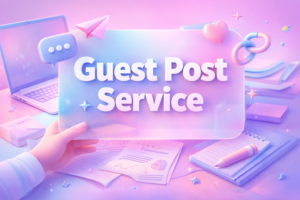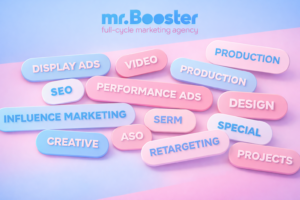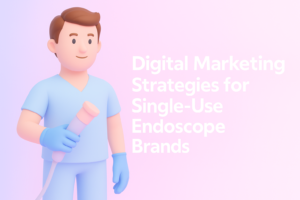The eCommerce ecosystem is growing and changing at a breakneck speed, driven by AI, instant checkout, and global fulfillment networks.
Yet, despite these innovations, a familiar paradox persists: many digital retailers obsess over conversion rates while undervaluing the returns from their most loyal customers.
Think of the subscription box company that knows exactly when a subscriber prefers their next delivery, or the electronics retailer that recommends the perfect accessory the moment it’s needed.
These brands aren’t just making sales; they’re building relationships that compound over time.
In a world where customer acquisition costs (CAC) are rising and profit margins are shrinking, the real scale doesn’t come from more eyeballs, but from deeper engagement.
This journey begins with understanding and optimizing Customer Lifetime Value (CLV), the metric that separates the flash-in-the-pan from the enduring eCommerce powerhouses.
Importance of CLV in eCommerce Businesses
CLV is not just a metric. It is a way to evaluate how well your brand retains, engages, and monetizes customers over time.

Here’s why measuring customer lifetime value in eCommerce is critical to building a sustainable business:
1. Facilitates Financial Predictability and Business Stability
CLV gives you a reliable estimate of how much revenue each customer will generate for your business over the course of their relationship with you.
For example, if you know that your average customer spends $300 over 12 months, and you’re acquiring 1,000 new customers every month, you can project future revenue with a good degree of accuracy.
This predictability becomes crucial when seeking investment, planning budgets, or making strategic decisions about product development and market expansion.
2. Reduces Acquisition Costs & Increases Profit Margins
The studies show that it costs up to 5-7 times more to land a new customer than to retain an existing one.
Every additional purchase from a loyal customer increases your ROI by spreading those upfront acquisition costs over a larger number of transactions, boosting your profit margins with each repeat engagement.
3. Enables Precise Targeting & Smarter Growth Decisions
By understanding which customer segments drive the highest CLV, you can focus your marketing spend where it has maximum impact.
Top brands, such as Amazon, Netflix, Sephora, and Nike, analyze CLV data to identify and target their highest-value customers, optimize retention campaigns, and design tailored experiences that foster continued loyalty.
4. Helps Make Informed Decisions Around Product, Marketing, and UX Optimization
CLV data helps you determine which products to promote further, how to bundle products, what upsells work, and even which support workflows need improvement.
It acts as a strategic compass across departments, facilitating informed decision-making.
5. Highlights the True Cost of Customer Churn for Proactive Risk Management
Understanding CLV in eCommerce helps identify when customer relationships are at risk and provides early warning signals for business health.
If your CAC is $100 and a customer with a potential CLV of $3,000 cancels after six months, you lose the remaining CLV and the $100 spent to acquire them.
Such insights help you determine the customer churn costs and develop targeted strategies to retain valued customers before significant losses occur.
How to Calculate CLV for eCommerce Businesses
To calculate customer lifetime value in eCommerce, you need to focus on three key components, i.e.:
- Average Order Value (AOV): This is the average amount a customer spends per transaction. For eCommerce businesses, this metric often fluctuates based on seasonal trends, promotional campaigns, and bundling offers.
- Purchase Frequency: It measures the frequency at which customers return to make purchases within a specified timeframe (usually annually). This component is particularly critical for e-commerce brands as it directly reflects customer engagement and satisfaction levels. A higher purchase frequency typically indicates stronger brand loyalty and a better customer experience.
- Customer Lifespan: The total period (months or years) a customer continues to engage and purchase from your store before becoming inactive or churning. The customer’s lifespan can be calculated by subtracting the first order date from the most recent order date. This metric helps predict long-term revenue potential and guides retention strategy investments.
Once you have all three components, you can calculate customer lifetime value by following this formula:

What is a Good CLV Range?
There is no one universal range or number for a “good CLV”. It varies by verticals, product margins, and business models.
However, the Shopify research suggests that eCommerce businesses must aim for a CLV: CAC ratio of 3:1 or higher to ensure profitability.
The same research highlights that the CAC averages between $127 and $462, depending on your industry.
Considering this, your CLV should be between $381 and $1386.
To sum up:
- if your CLV: CAC ratio is below 3:1, your acquisition costs may be too high, or your retention strategies may be ineffective.
- A ratio far above 3:1 may indicate underinvestment in growth.
💡 Pro tip: Always benchmark your figures by comparing them to industry peers and tracking improvements over time, rather than rigidly chasing universal “good” numbers.
Historical CLV vs. Predictive CLV: What Should You Measure?
- Historical CLV: The customer lifetime value is calculated based on historical user behavior data. It’s ideal for identifying which campaigns or channels produced high-value buyers and for refining retention tactics.
- Predictive CLV: Uses current (or real-time) data and behavioral signals to estimate future customer value. It is a more useful metric for forecasting, budgeting, and informed decision-making.
📝 Best practice: Track both, but prioritize Predictable CLV for forward planning. Growth-focused brands combine real transaction data (historical) with predictive analytics (based on current engagement, segmentation, and lifecycle stage) to improve customer retention in eCommerce and maximize profitability over the long run.
How to Increase or Optimize Customer Lifetime Value in eCommerce – 5 Proven Ways
1. Focus on Personalization and Improved User Experience
In 2025, personalization is a practical CLV optimization tactic.
Tailored product recommendations, dynamic email flows, and personalized on-site experiences can significantly boost repeat purchases.
According to McKinsey, companies that personalize effectively can generate 40% more revenue from those efforts.
Brands like Netflix, Amazon, and Sephora are the prime examples of how personalization improves user experience and customer retention:
- Amazon and Netflix have set the standard with sophisticated algorithms that recommend exactly what users are likely to want next, boosting both conversion rates and customer retention.
- Sephora leverages purchase history and in-app quizzes to recommend products based on skin type, preferences, and purchase history. Their app’s virtual try-on feature enhances UX by allowing customers to test makeup virtually, increasing confidence in purchases and reducing returns. This has helped Sephora maintain a loyal customer base with high CLV and average order value.
Along with personalization, improving user experience (such as fast-loading pages, easy navigation, and seamless mobile checkout) directly impacts purchase frequency and customer satisfaction.
Even small UX enhancements (like saved carts or tailored landing pages) can lead to measurable CLV gains.
2. Leverage Strategic Cross-Selling and Upselling
Strategic upselling and cross-selling are proven ways to increase both average order value and customer lifetime value in eCommerce.

When implemented correctly, they reinforce product relevance and trust, encouraging customers to buy more over time. This is especially powerful in post-purchase email flows and cart page enhancements.
- Cross-selling: Involves suggesting products that enhance the primary purchase to increase the total value of the cart. Almost every major brand is implementing cross-selling in one way or another to promote the sale of bundled products on marketplaces or their websites.
- Upselling: Encourages customers to opt for a premium version, like a higher-tier subscription or a product with advanced features. Brands like Spotify are utilizing upselling to promote the purchase of their premium plans among the global user base.
Both these approaches work efficiently for different brands, but only when implemented strategically.
Timing and relevance are the keys to successful cross-selling and upselling, ensuring you display suggestions at critical moments like the product page, cart, or post-purchase confirmation while maintaining relevance.
To execute this effectively, businesses often work with CRO (conversion rate optimization) specialists, who segment products by behavior and lifecycle stage to make sure that recommendations feel helpful, not pushy.
3. Implement Loyalty Programs and Subscription Models
Loyalty programs and subscriptions create a built-in retention mechanism.
When customers are rewarded for repeat purchases (via points, early access, or tiered perks), they’re more likely to stick around.
Similarly, subscription models smoothen purchase frequency and create predictable revenue streams.
One of the successful loyalty programs that we have all known about is Sephora’s Beauty Insider.
Launched in 2007, this free rewards program allows U.S. and Canadian customers to earn points for every dollar spent, redeemable for benefits like free shipping and special product discounts.
Since its launch, the program has been a hit for Sephora, having over 40 million members currently.
Sephora is not the only brand that has a successful loyalty program or subscription model.
Brands like Amazon, Netflix, and Starbucks are maintaining a loyal customer base worldwide for consistent and recurring revenue through such programs.
To implement a loyalty or subscription program that successfully works for you, it is critical to first understand customers’ shopping behaviors, preferences, and pain points.
If you’re unsure how to structure rewards or recurring billing, working with an experienced eCommerce marketing agency can help.
They have experienced e-commerce strategists/consultants who help develop tailored programs that align with your specific customer base, product offerings, and business goals, ensuring it’s both effective and scalable.
Modern brands are also introducing digital reward journeys using QR Codes QRNow for Loyalty Programs, making it easier for customers to join, earn points, and redeem rewards instantly with a simple scan – an approach that boosts engagement and strengthens long-term loyalty.
4. Provide Better Customer Support
Your customer service defines a lot about your brand and how invested you are in building long-term relationships with your user base.
Ever heard about the concept “Service recovery paradox?”.
It suggests that customers who experience a problem and then have it resolved effectively may end up more loyal than customers who never experienced an issue in the first place.
In other words, a well-managed service failure can actually increase customer lifetime value in eCommerce by deepening trust and satisfaction.

Service Recovery Paradox. Source: ResearchGate
The service recovery paradox strengthens your relationships with existing clients by turning frustration into advocacy.
When a brand swiftly and sincerely addresses a mishap. Whether it’s a delayed order, damaged product, or billing error, customers feel valued and respected.
This positive emotional response drives them to return, purchase more, and even recommend your business to others.
To improve your customer service and transform recovery into opportunity, you must:
- Give the customer support team the autonomy and resources to solve issues promptly, waiving fees, offering replacements, or upgrading shipping speed as needed.
- Stay honest with the client. Acknowledge the issue right away, explain its cause, and outline the resolution process.
- Listen actively, show empathy, and resolve conflicts calmly. These human touches have a lasting impact on loyalty.
- Collect feedback from clients and work on it to proactively improve support systems and prevent recurring issues.
5. Improve Your Return and Refund Management Policy
In eCommerce, product returns are inevitable.
In fact, the SAP Emarsys report highlights that the product return rate is increasingly rising, with around 84% of shoppers returning items in the last year.
The reasons for product returns could be any: inaccurate product description or images, poor product quality, or sometimes the user changes their mind after the purchase.
But what matters more than these reasons is how you handle returns and refunds. This is where brands lose most of their loyal customers due to poor policy, unclear terms, or paid return conditions.
Let’s understand this through the example of the “Pretty Little Things” brand.
This fashion brand gained a significant user base and popularity during the COVID pandemic, but faced huge backlash last year when it introduced a £1.99 charge on returning clothes, with the cost deducted from customers’ refunds.
The most frustrating thing for customers is that the brand applied the paid return policy to its Royalty scheme members as well, who were already paying £9.99 annually to receive unlimited free deliveries in the UK. Customers felt frustrated, especially as they complained about inaccurate sizing information.
Many stated they wouldn’t have returned the products if the sizes had been more accurate.
Many brands like Pretty Little Things are losing their loyal customers because of poorly handled returns and refund policies.
In the same Emarsys research, the shoppers have stated the key reasons behind frequent product returns and what they expect from a brand for a seamless shopping experience.

Image Source – Retail-Today
To avoid losing customers over poor return management, your business must implement a transparent, shopper-friendly return/refund policy and make it easily accessible on your website.
Offering a free, no-questions-asked return policy not only enhances the shopping experience but also helps retain your loyal customer base.
While policy creation is one part of this equation, you must also try to reduce returns in the first place. This is possible by:
- Keeping your product descriptions accurate, complete, up-to-date, and filled with all relevant and necessary details.
- Uploading high-quality product images (or preferably videos) for a true representation of an item. You can use 3D product models for a more realistic representation in virtual settings.
If struggling to manage in-house resources for product description writing, listing management, or 3D product modeling, you can seek outsourcing as a solution.
By partnering with eCommerce store optimization experts, you can keep your listings up-to-date and improve the overall customer experience.
Final Takeaway
The right way to proceed isn’t about implementing every eCommerce CLV optimization strategy simultaneously; it’s about creating a systematic approach that builds momentum over time.
Start with the foundation: accurate CLV measurement and data infrastructure. Once you have reliable metrics, prioritize the optimization strategies that align with your current capabilities and customer behavior patterns.
Consider CLV optimization an investment in your business’s future valuation. Even small improvements in CLV can compound into significant profitability gains.
So, start today and stay consistent for building a loyal, value-driven customer base that keeps returning for more.








